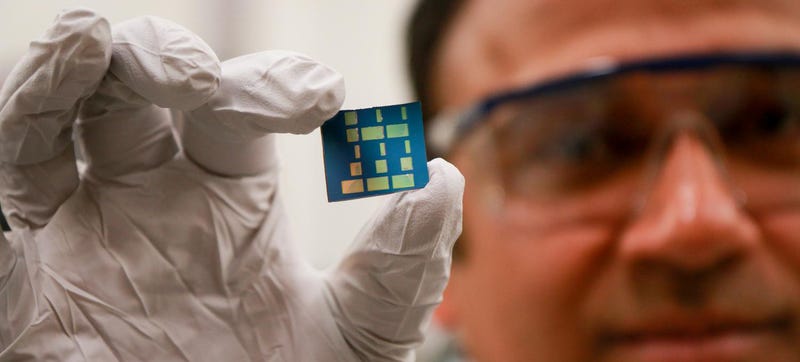A Brand New 2D Semiconductor Could Put Silicon in the Shade
Source: Jamie Condliffe
 A new kind of semiconductor is the first material with a 2D geometry to provide the electrical properties of silicon—but its shape could mean that it’s actually able to outperform the reliable old material.
A new kind of semiconductor is the first material with a 2D geometry to provide the electrical properties of silicon—but its shape could mean that it’s actually able to outperform the reliable old material.
Like graphene, the new semiconductor is a 2D layer that’s just a single atom thick. Made up of tin and oxygen—or tin monoxide, if you’d rather—the 2D sheets conduct electrical charge much faster than conventional 3D semiconductors like silicon.
The new breed of 2D materials—graphene, stanene and borophene—have been touted as having incredible electrical properties. And they do: Some of them conduct electrons better than many other materials could ever dream of. But in order to replace the gold standard that is silicon in electronic devices, that’s not enough.
A semiconductor—which is the kind of material used in the transistors that, when added together, can create computer chips—doesn’t rely on moving just negatively charged electrons, but positively charged ‘holes’ too. (The best way to think of a hole is as a lack of an electron at a position where one could exist.)
The new tin monoxide material is the first ever 2D semiconductor to allow the movement of both negative electrons and positive holes. “Now things will move forward much more quickly,” explains Ashutosh Tiwari, one of the researchers, in a press release. He’s referring not just to the speed of conduction—though that is higher, because holes and electrons move faster when constrained to a 2D plane—but the rate of technological development, too. The research is published in Advanced Electronic Materials.
Indeed, the researchers aren’t too shy about the prospects on offer thanks to the new find. The material should make it possible to create transistors that are smaller and faster than those used today—and Tiwari reckons the speed bump could be as much as a factor of 100. He also points out that the 2D structure makes them cooler and more efficient: With fewer electron collisions, there’s less heat build up and wastage, reducing the need for cooling and extending battery life to boot.
All of which sounds perhaps too good to be true. And yet Tiwari promises that “in two or three years we should see at least some prototype device.” If he’s right, silicon may have a fight on its hands.
| }
|